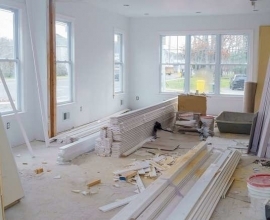Basement renovations start with waterproofing
When we first started putting basements under houses, the space was mainly used for storage, laundry and as a place to keep the furnace and hot water tank out of the way.
But as our lifestyles have changed — and property values rose — the basement became an obvious place to add more living space.
But basements are also the parts of houses that are most likely to get flooded. So the first consideration before starting any work on the basement is to make sure it’s properly waterproofed.
With many older homes, there’s virtually nothing to stop water from seeping through cracks and gaps in the foundation and cause all sorts of problems.
Ideally, you’ll want to do it from the outside, by digging a trench around the entire perimeter of the house and then installing a waterproofing membrane to the exterior side of the wall. Of course, with many city homes, there simply isn’t room between neighbouring houses to excavate. In that case, you’ll need to apply the waterproofing membrane on the inside of the walls.
Either way, the membrane will extend below the floor level and get tied into a weeping tile system that collects any water and channels it away from the foundation.
If you’re adding the waterproofing on the inside, you will need to install a sump pit where the water will collect and, once it reaches a certain level, a pump will push it outside. (Note that the building code prohibits the sump pit from being connected to the sewer lines, so you’ll need an outflow pipe to the exterior.)
In the past few years, we’ve had some torrential storms that taught many homeowners a painful lesson. When does the power tend to go out? When there’s flooding. When do you most need your sump pump? When the power’s out and it starts to flood.
I’ve recently come across a great product that helps avoid this catastrophe, the Ion Genesis. It has dual, digital water-level sensors so there’s a built-in backup. It can be combined with a battery backup to keep the system running when you need it. There’s even an alarm system that will automatically call you if there is a problem.
Most older basements have little to no headroom, so before renovating, owners often opt to excavate first. There are two basic options: underpinning and benching. With underpinning, a contractor will excavate below the existing foundation wall, in stages, and then pour a new, deeper foundation below the original.
Source: – https://www.thestar.com/life/homes/2015/05/15/basement-renovations-start-with-waterproofing.html







